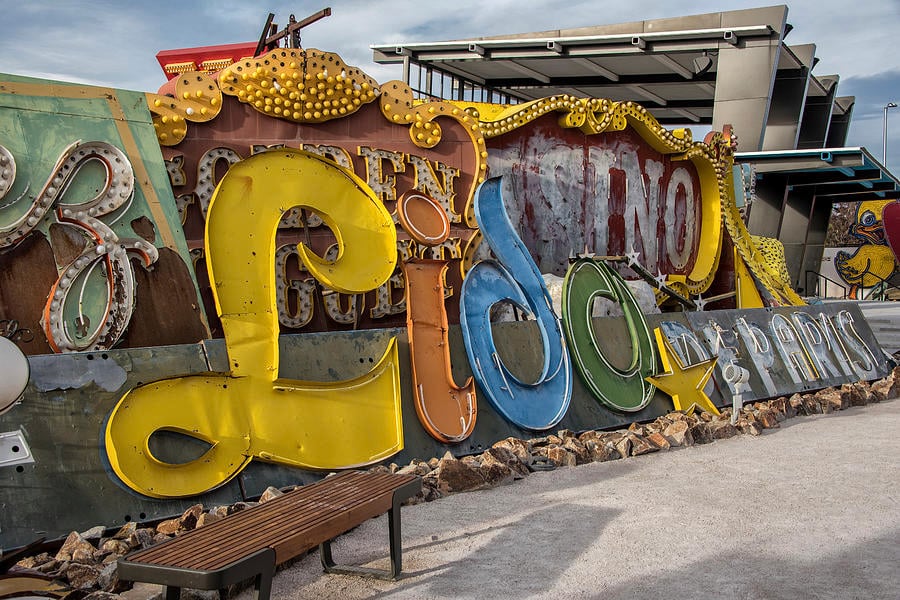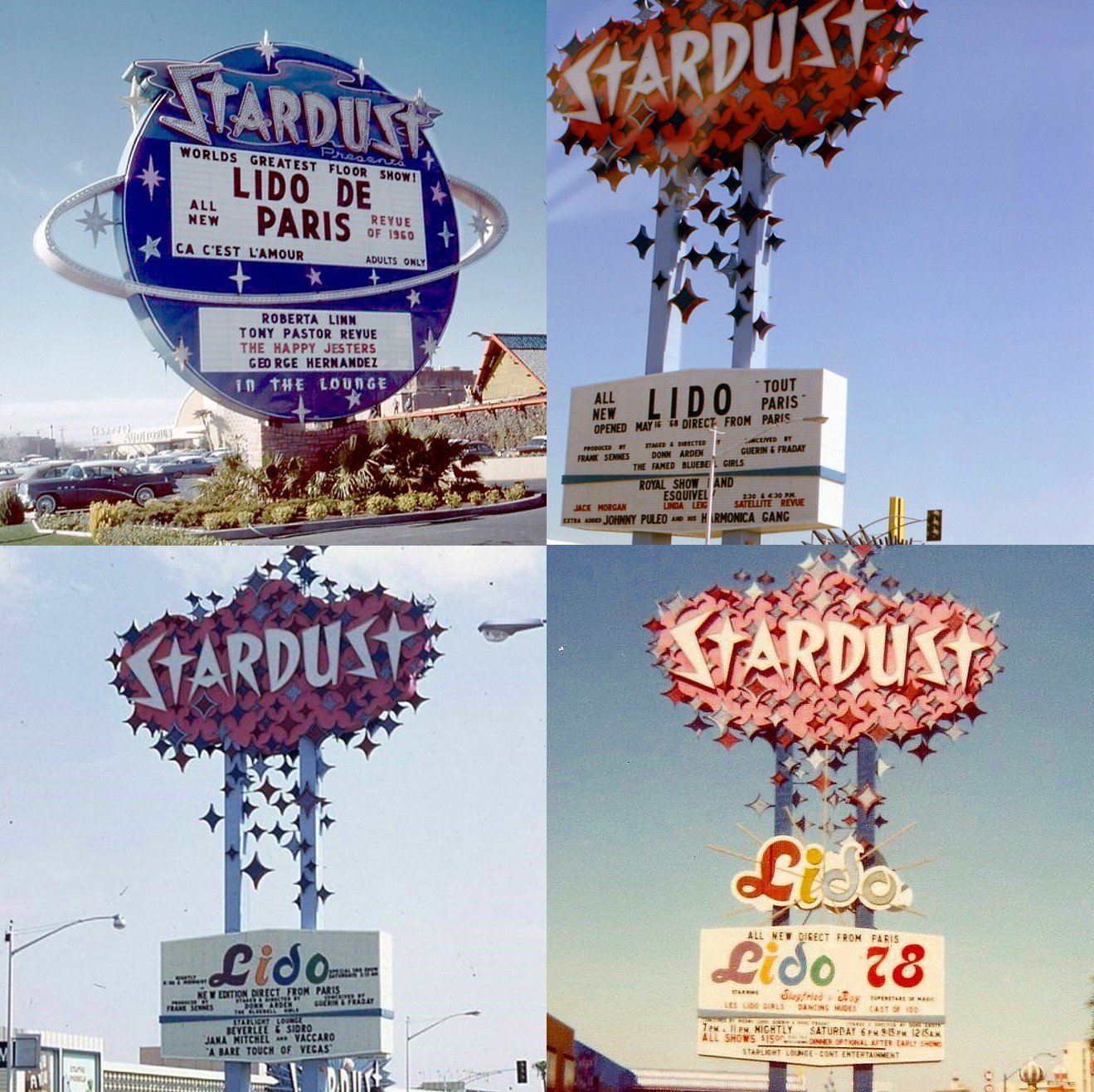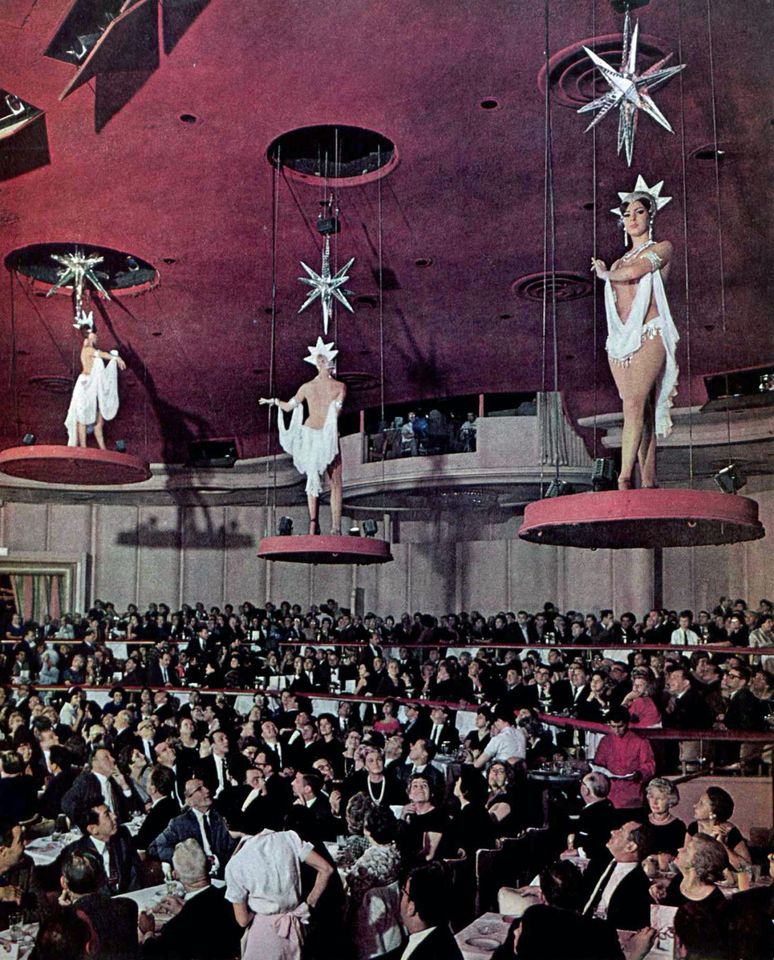One small detail was missing from reports this weekend that “the famous Lido de Paris sign” – from the very first showgirl show on the Las Vegas Strip – is about to be relit by the Neon Museum for the first time since the show closed in 1991.
It’s not the famous sign, because it was never displayed on the exterior of the Stardust casino or on any of its Las Vegas Strip marquees.


This is not meant to disparage the painstaking restoration work conducted by the family-owned Hartlauer Signs of Las Vegas, or the generous gift funding it from local philanthropist Todd VonBastiaans.
However, this 56-foot-long sign is a “Lido de Paris” sign, not the sign. Most likely, it’s what was known as a “roadside” sign – directing traffic toward a casino from the Strip. (In fact, the Stardust sign displayed by the Neon Museum may also be from a road sign, since no red lettering appears to have ever graced the hotel’s building or sign.)


Levi Mix, one of the sign’s restorers from Hartlauer Signs, told Casino.org he was not aware of where or when the Neon Museum’s sign was displayed. Emails and voicemails seeking clarification from the Neon Museum went unreturned at the time this was posted.
Whatever “Lido de Paris” sign this was, it is slated to be relit at an invitation-only ceremony on Thursday, Feb. 2 at sunset at the Neon Museum, 770 Las Vegas Blvd. North. Guests will include Las Vegas Mayor Carolyn Goodman and the surviving cast and crew of the “Lido de Paris” show. It will be the museum’s 23rd illuminated sign on display in their back lot, known as the Neon Boneyard.
No Disputing Show’s Historicity


Opening along with the Stardust on July 2, 1958, the “Lido de Paris” was the first official showgirl show on the Strip, defining the showgirl as an icon of Las Vegas culture. An offshoot of the original “Lido” – which still runs in Paris after nearly 95 years – it was the brainchild of choreographer Donn Arden, who imported the first cast to Vegas directly from Paris. (In the ensuing years, Americans took over the roles.)
At the time, the Strip featured plenty of burlesque shows. But “Lido de Paris” introduced mainstream respectability to the format by having its topless dancers perform, as part of a variety-show format, in splashy extravaganzas reproducing the MGM Hollywood musicals of the day. The show also featured singers, jugglers, animal acts, slapstick comics, and live orchestras or bands.
The success of “Lido de Paris” led every major casino hotel to open its own showgirl show. In 1959, the Tropicana debuted “Folies Bergère” and El Rancho Vegas debuted “La Nouvelle Eve.” In 1963, the Dunes debuted “Casino de Paris.” In 1968, the Desert Inn debuted “Pzazz!” And, in 1974, the MGM Grand debuted “Hallelujah Hollywood.” The last showgirl show to open – “Jubilee!” at Bally’s in 1981 — was also the last to close, in 2016.
After playing to more than 19 million guests over 22,000 performances, the “Lido de Paris” closed on Feb. 28, 1991. Its final curtain call was taken by 400 then-current and former showgirls in front of a VIP crowd including illusionists Siegfried and Roy, who launched their Vegas career as one of the show’s aforementioned animal acts in the early ’70s.
The Stardust replaced “Lido de Paris” with a forgettable ’90s revue called “Enter the Night,” featuring a Sting impersonator and hip-hop dancing. While the “Lido de Paris”’s 32-year run was impressive, it was bested by “Folies Bergère,” which ran for 50 years before closing in 2009.
Though the official reason given for the closure of “Lido de Paris” was a desire to modernize by the Stardust’s final owner, Boyd Gaming, the real reason was the enormous expense of producing the show. More than $6 million a year was spent on costumes, sets, props, payroll, and licensing rights from the original Paris show. (Back then, all shows were produced by the resorts themselves. It wasn’t until the ’80s that corporate casino owners hit upon the now-standard practice of renting out their venues to independent producers.)
The Stardust was imploded on March 13, 2007. But the “Lido de Paris” is remembered in every performance of Katy Perry’s “Play” residency at Resorts World – located on the former site of the Stardust – when the pop superstar recalls visiting her grandmother, Ann Pearl Hudson, when she worked backstage at the “Lido de Paris” as a seamstress.
The post Historic Las Vegas Strip Showgirl Sign Set for Relighting Not So Historic appeared first on Casino.org.